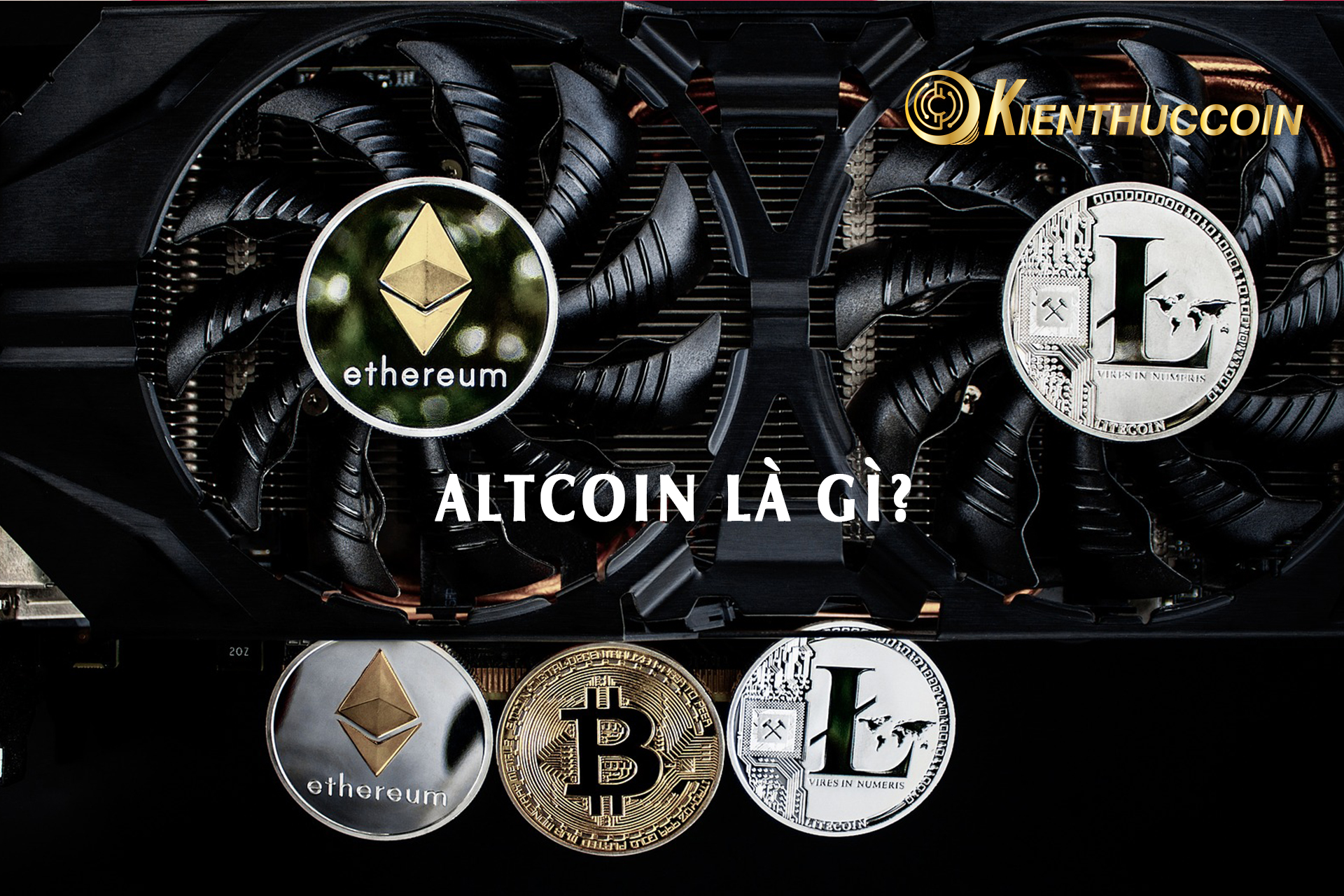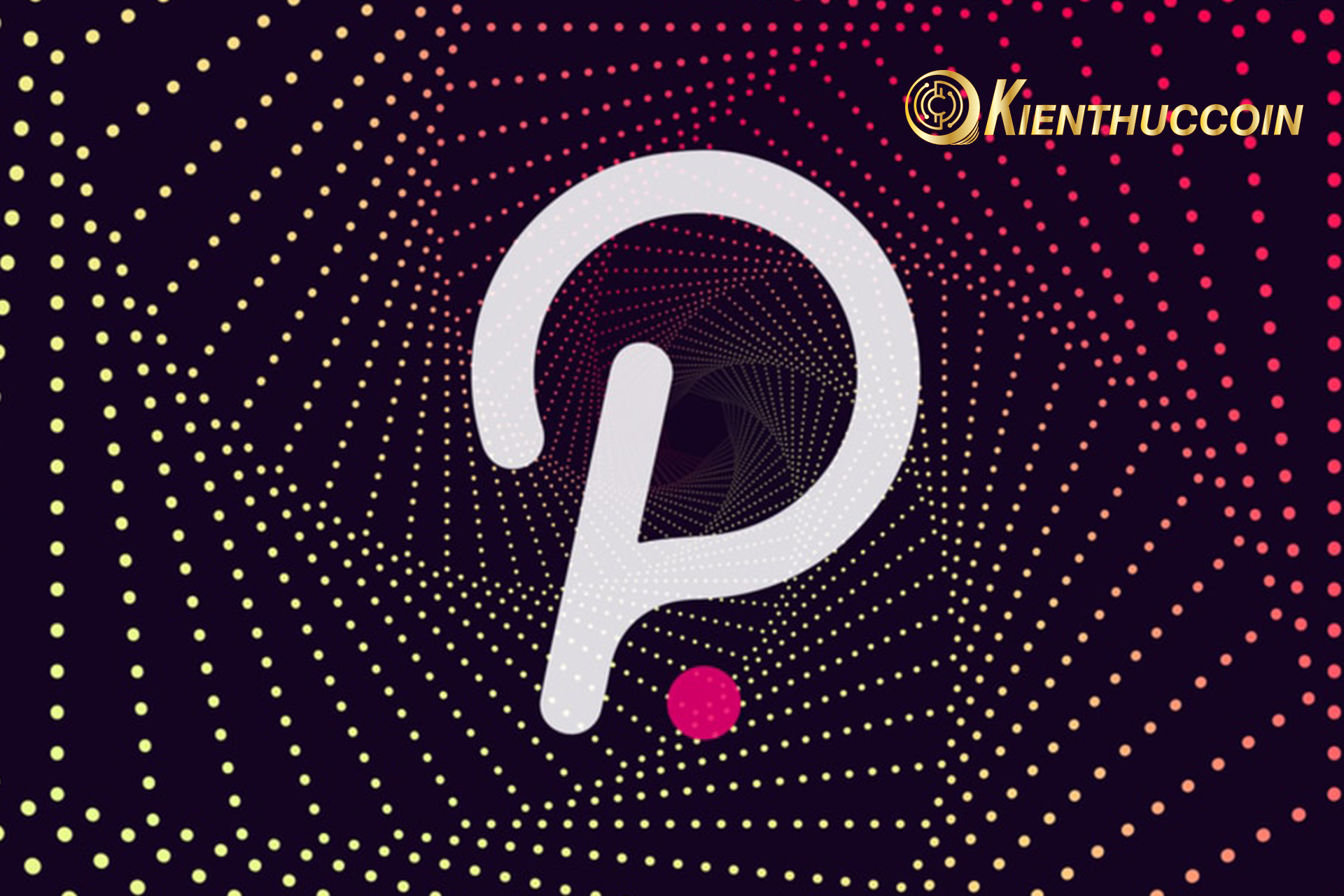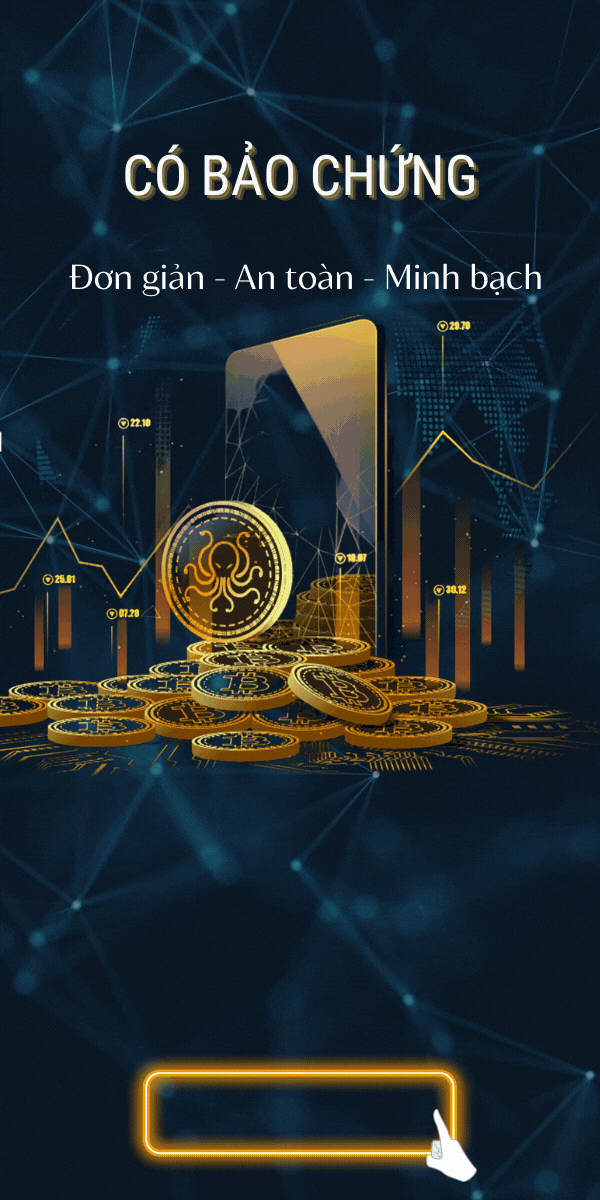Mục lục:
All transactions on the blockchain will need to request verification – the system type of reward helps traders crypto verify transactions and network support for essential to earn cryptocurrency. So What is Staking? What is a Stake Coin? And what information should be noted when staking coin/token.
In this article, Kienthuccoin will clarify for you the above content:

What is Staking?
What is Staking? Staking is the act of holding and locking a certain amount of coins/tokens to receive rewards from them. This amount of coin/token can be locked in a wallet or nodes of a project Blockchain for a certain period. The reward (Reward) will be based on the user's effort, including staked coin amount & stake duration.
Proof of Stake is the consensus algorithm in Blockchain. Participating investors will stake their coins (staking coins) into the Blockchain network to validate transactions and create new blocks. Rewards (including block rewards and transaction fees) will be given to PoS participants as an incentive for their contributions.
Classification of Staking Coin:
Staking in the PoS consensus mechanism
That is, inventors will stake a certain number of coins/tokens to secure a specific task. In the PoS mechanism, participants stake coins to secure, prove their ability to process transactions and create blocks, and receive rewards for their efforts. This Staking has a direct impact on the Blockchain network.
Typical examples are Blockchain Platform projects such as IOST, OneLedger (OLT), TomoChain, WAX, Tron (TRX),…

Note: PoS is the most general and consensus mechanism of ” bet coin” to perform their assigned tasks. “In addition, there are also many variations of this type such as PoSV, DPOs, … However, we are working based on the bet coin.
So, in all In this writing, I will use the term PoS to refer to the consensus mechanisms utilizing this form of coin.
Staking to receive a reward
Users will use their tokens to stake back into the project's ecosystem. This Staking is not directly involved in validating transactions or any tasks related to network activities. However, the project is still called stake. It has the same meaning, like, lock more. The longer a user locks, the more reward they will receive. For
Example: Stake KCS on the exchange (hold) to receive more KCS reward. The amount of KCS as a reward is taken from the exchange's profit, not from creating new blocks or transaction fees.
KCS is an ERC-20 Token on Ethereum, and Staking KCS does not impact the Ethereum Blockchain network.
What are the benefits of Staking?
For staking participants – Staker
What are the benefits of Staking for Stakers:
Create a passive income source & increase the number of coins during Staking: This is the first and most apparent benefit anyone can look out for.
Instead of leaving it on exchanges without receiving additional coins, traders can stake and receive additional coins during the staking process. Of course, this will suit investors who want to hold that coin for the long term. If the holder wants to trade, buy and sell continuously, it will not be suitable.
Cost-saving compared to PoW mechanism: This is easy to see when comparing the latest ASIC rigs with a high configuration computer.
To participate in Staking, of course, holders must satisfy some conditions of the project. The number of coins to be staked and the machine configuration requirements to participate in Staking. Especially investors who want to become the main Nodes, Masternodes in the Blockchain network will need higher configuration computers.
However, with PoS, investors do not need a lot of computers to run Nodes but almost only need one machine and install it once. The rest is to increase the number of Staking coins inside. This is different and much more economical than PoW – the more high-end computers, the more mining.
Security: Staking is done securely because there is a backup.
At the same time, before the official Staking, the holder can calculate his profit rate after that Staking period, such as the date and time when the investor is unlocked, or if you want to unstake in the middle, how long will it take you? to get coins.
For projects
The benefits of staking for projects:
- Staking in PoS is a way for the underlying Blockchains to create decentralization for their network. The power and strength of the network will now be divided among the participants (Node, Masternodes…).
- Take advantage of external resources to operate the network through nodes.
- Incentives join the network: Participating in staking and receiving rewards will help participants maintain their activity.
- Network security: To carry out attacks, hackers must hold 51% of the network's power. Dispersing that power in different nodes will make it nearly impossible to gather their ability to create attacks.
- Somewhat impact on the price of the coin, I will analyze it more clearly below.
What are the risks of Staking?
Staking is a form of investment that brings steady returns, but they also have certain risks:
During the Staking period, the amount of coins participating in the Staking is locked.
Investors will not be able to do any buying/selling or trading with this coin/token. The un-stake will cause the investor not to achieve the initially desired reward. Usually, to unstake, investors will also have to take a while to get back the coins/tokens staked. Maybe when receiving that coin/token, the opportunity has passed.
Staking is not always profitable. The biggest risk that holders can face is the price of the coin going down.
For example: When staking 1,000 coin X (price $0.1/X) with an interest rate of 30%/year. When the holder receives the profit, the total amount of coins received will be 1,300 X coins. But if the price is only $0.07/X, the total value is now $91 (less than $100 of the initial investment).
Impact of Staking on Coin price:
Staking users for projects using the PoS consensus mechanism is decisive for the entire Blockchain network. That is obvious.
But for projects applying the PoS mechanism, how does it affect the price of that coin/token when starting to allow Staking?
Investors can see some effects on supply and circulation immediately: The amount of staked coins will be locked for that time. This means that these coins cannot participate in circulation, trading on exchanges. Therefore, it causes the amount of coins circulating in the market to decrease.
When the supply in the market decreases, i.e., its scarcity increases, it will cause the price to increase. This is the fundamental law of supply and demand.
Let's take a specific example as follows with token TOMO:
- On December 10, 2018, TomoChain announced a program for candidates to run Masternode.
- On December 14, 2018, TomoChain officially launched the Mainnet and allowed Masternodes to stake TOMO coin. Also, let other users vote for these Masternodes.
- As of the time of writing this article (August 8, 2019), 39,851,005 TOMO (accounting for 64.5% of total market circulation) are being staked to participate in the PoSV consensus mechanism. The price of TOMO increased by up to 300% in the period from the start of Staking.

Note:
- TomoChain uses the PoSV (Proof of Stake Voting) consensus mechanism: There will be Masternodes responsible for transaction validation and block generation. To become a Masternode, they must meet certain conditions. Including the requirement to have 50,000 TOMO to become a candidate.
- Other users can use TOMO voting for their candidates. If that candidate becomes a Masternode, they will also receive the corresponding reward.
- The 300% increase in TOMO coin's price is not entirely due to the impact of Staking. Apparently, during this time, the price of TOMO also went up and down many times. However, the impact of staking on the price of TOMO is real and relatively apparent as its total circulation has decreased by 64.5% due to participating in Staking.
Parameters to pay attention to when Staking Coin
Inflation rate
This is the ratio of new coins born to the number of coins in circulation.
In Staking of the PoS mechanism, the rewards for stakers come from 2 sources: transaction fees and newly generated blocks. That is, there will be a new amount of coins born into the market, causing inflation.
This rate of inflation directly affects the amount of circulation and the price of that coin. For coins with a PoS mechanism, this inflation rate is always present.
Lock time
This is the time the coin is locked. This time investors can choose from the beginning. Often projects will give options from scratch. For example 1 month, three months, or one year… After this period, you can get back the number of coins you have staked.
With Nodes or MasterNode participating in Staking, usually determine the lock for the duration of the Node. During that time, they receive rewards as a source of income.
Unlock time
Most investors can unstake before the end of the staking process. However, investors will not be able to get their coins back immediately after pressing the “un-stake” button, which usually takes a certain amount
of time. Projects create this rule so that unstake does not affect the regular operation of the network, and they have processing time if the amount of coins is too large.
For example: In TomoChain, Voters for Masternodes who want to unstake will be received after 48 hours. As for Masternodes who want to stop working, they will only receive TOMO after 30 days.
ActivelyStaking interest
This is probably the parameter that many holders are most interested in – The rate of interest received after 1 Staking period. The larger this number, the more coins/tokens received after, the more significant stake.
However, in addition to optimizing the number of high-interest rates, we also need to consider other indicators.
the minimum number to participate Stake Coin
This is the minimum amount of coins for a user to start participating in Staking. This number may vary from project to project.
For example, TomoChain requires 100 TOMO, Decred (DRC) requires a minimum of 5 DRC to start Staking.
Coinage
It is the period of time the coin is put into staking until it can participate in the official Staking (the time when the coin starts to earn). Depending on the project, this time can range from a few hours to a few days.
Weight (coinage and number of coins)
Weight includes coinage and the number of coins. Here investors can understand it as the weight of the coin.
The higher this Weight value (the larger the number of coins and the longer the coin participates in Staking), the greater the ability to win the right to process transactions and create blocks. Therefore, it directly affects the reward (reward) that the investor will receive in the future.
How to optimize profit when Staking?
Based on the parameters directly affecting Staking above, investors can partly know how to adjust these indicators to get the most rewards and highest profits. In this section, I will talk about how to participate in Staking to get the most profit.
Determine the suitable method
The first is to classify according to the need and amount of coins held:
For those who have a small number of coins (not enough to be a Node or Masternode):
- The best option is to participate in voting, or Staking on Nodes are available to receive rewards from those Nodes. This form includes Staking right on the wallet or some supported exchanges.
- For those who have a small number of coins, determined to hold for a long time, Staking will help them earn an additional amount of coins during that time.
For those who hoard a large amount of coins:
- They can also apply the above method if they want to be flexible in the process of locking coins. Or you can apply to be Nodes or Masternodes directly involved in transaction processing and block creation.
- This way will help stakers get more rewards. But of course, there will also be higher requirements for hardware installation and connection.
Implementation steps
With both groups above, holders need to perform the following steps:
- Step 1: Choose a coin with a staking mechanism. Of course, before choosing an investor, you need to consider the parameters mentioned above to balance your needs, capital, expectations, and interest rate expectations.
- Step 2: Install wallet or configure the computer to prepare for Staking.
- Step 3: Load coins into your wallet/computer or exchange to start Staking. For cold wallets, investors must always ensure that this wallet is connected to the network environment 24/7.
- Step 4: Wait for the coin to mature and start receiving interest.
Note: To optimize profits when staking, you need to pay special attention to the following parameters: Interest rate, coin inflation, coin price, weight.
Top 5 most profitable staking coins at the moment
The first is the top 5 projects with the most locked asset value according to the ranking of website stakingreward.com on August 13, 2021.
This is a curated list that includes blockchain projects using the PoS mechanism and other blockchain-based projects. But also allows users to stake to receive the reward (Profit Share).
Cardano (ADA)
Cardano is an outstanding Blockchain technology platform with high scalability, good interoperability, and sustainability to balance the interests of miners/nodes with the development team.
ADA is the official cryptocurrency of Cardano. So far (August 13, 2021), 13.8 billion ADA has been used as staking rewards for ADA staking participants.

Ethereum 2.0 (ETH)
Ethereum 2.0 is the final destination of the Ethereum network in upgrading from Proof of Work (PoW) to Proof of Stake (PoS) consensus mechanism, and at the same time applying Sharding for boosting high transaction processing speed of Ethereum.
ETH or Ether (symbol: Ξ) is the official cryptocurrency of the Ethereum blockchain. In the Ethereum network, ETH acts as the fuel to execute transactions related activities (Gas fees).
To stake ETH, investors need to have:
- Minimum 32 ETH per validator.
- The computer has sufficient hardware specifications.
- Strong Internet connection.

Solana (SOL)
Solana is an open-source and high-performance blockchain platform that is scalable up to 700,000 transactions per second and 400ms block time. This platform does not need to apply complex solutions like Sharding (database fragmentation) or Layer 2.
SOL is the official coin of Solana Blockchain. The risk when Staking SOL is almost zero.

Polkadot (DOT)
Polkadot is a Blockchain platform, also known as multi-Chain technology, heterogeneous and highly scalable. Polkadot allows blockchains to connect to share data and form a decentralized network.
DOT is the official cryptocurrency of Blockchain Polkadot.

Binance Smart Chain (BNB)
Binance Smart Chain is a Blockchain that works in tandem with the Binance Chain of Binance. Binance Smart Chain is a blockchain clone of Ethereum on the Binance platform, it can perform smart contract creation, compatible with Ethereum's EVM virtual machine, and BSC also supports Cross-chain with Binance Chain.
BSC does not use a new token; the exchange always uses Binance Coin (BNB) as the main token. Besides, because there is no inflation, the reward when Staking coin BNB will also be lower than that of other Blockchains.

In addition to the five coins above, investors can also refer to some of the most staking coins today, such as USDC coin, DAI, Terra (LUNA), Algorand (ALGO), Avalanche (AVAX).
Staking trend in the future
Staking to compete Node, Masternode
This trend is clear and ongoing. A lot of recently launched blockchain platforms already use the staking consensus mechanism.
The competition occurs mainly with those who want to join between Nodes or Masternodes positions in the Blockchain network. As for those who just need to Staking on these nodes and receiving rewards.
Staking on wallets
This trend has started since the end of 2018 and the development of available Examples of users of their large and hoarding copper coin on it. Often wallets will combine with projects with Staking to allow coins to be locked and staked right on their wallets.
Some examples supporting this work include: For Cobo, Haskey Wallet, Wallet Trust, Coinomi, Crypto …
Services staking 3rd party
Here, coin holders can send their coins to the staking Pool of these third parties. They will use that amount of coins to nominate to become a node in the Blockchain network and pay rewards corresponding to the participants who contribute.
For example: stakewith.us, stake.capital, P2P.org, mycontainer…

Staking on exchanges
Hold/trade coin/token on an exchange that supports this feature will be counted as participating in Staking and getting rewards. This amount of coins remains in the investor's exchange wallet, and it is not directly related to price, block generation, or transaction validation.
For example: Recently, both Binance and Kucoin have promoted this campaign, the number of coins supported is increasing.
- Binance: XML, KMD, ALGO, QTUM, STRAT.
- Kucoin with Softprogram Staking: ATOM, EOS, TRX, IOST, NEBL, ONION, NGR, NULS, TOMO, LOOM.
This method will motivate the exchange users when they can both participate in trading on the exchange and receive new coins without having to lock the coin for a long time. This may be the new trend of Staking soon.
Liquidity unlocking project
It is easy to see the disadvantage of Staking that will make investors imprisoned during the Stake period. Therefore, there are many projects born to solve this situation.
Not the first name in the field, but Lido is the most famous project for supporting Stake ETH 2.0. Users can get their respective stETH assets back while still being able to deposit ETH into Stake. stETH can still be traded and borrowed normally, only stETH is not accepted everywhere.
Between 2021 – 2022, projects begin to focus on auctions for the Parachain platform on Kusama and Polkadot. This requires locking up a massive amount of KSM and DOT. Since then, there have been projects that support unlocking liquidity for KSM, and DOT like Lido does with ETH, which is Staff.
Above are the shares about “What is Staking? What is Stake coin and information to pay attention to”.
Immediately follow the Kienthuccoin channel to get the fastest updates on all outstanding information and events in the Cryptocurrency market.
Frequently asked questions about Staking, What is staking coin?
Where to learn about Staking?
Currently, Staking is very popular and easy to join on both exchanges or wallets. However, before officially participating in this form, investors should learn about it.
In addition, now exchanges have a section on Staking; investors can go there to find out which assets are being staked supported on the exchange, how much APR, lock time, etc.
How to compare rewards staking coins?
Investors can directly access the website of the project they want to Staking to find information. Or you can go to the page https://www.stakingrewards.com/ to search.
How to configure the machine to Staking coin?
Each coin requires a different hardware configuration for staking. However, the need for a computer with its own VPS for Staking is usually for Nodes or Masternodes.
As for retail investors who want to be flexible with their coin amount but still want to participate in Staking, investors do not need to be too concerned with machine configuration because they can stake right on wallets or exchanges.














